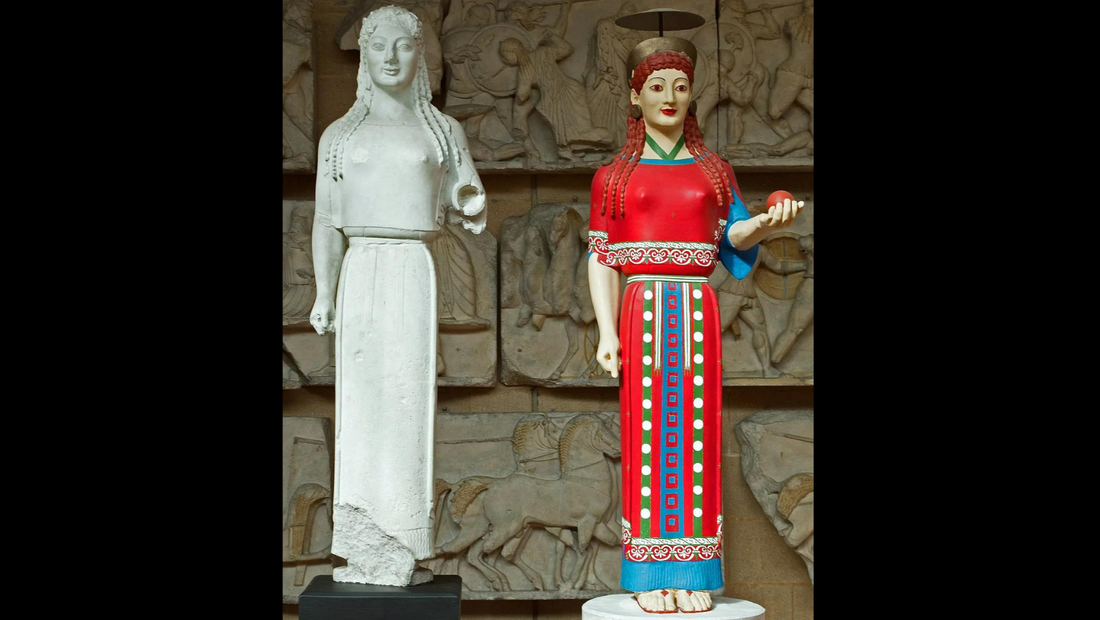The statue of a girl called Peploscore is one of the most famous examples of the archaic art of ancient Greece. The 117-centimeter-high statue made of white Parian marble was created around 530 BC and originally stood colorfully painted on the Athenian Acropolis. Today it is exhibited in the Acropolis Museum under inventory number 679.
Peplos Kore's Features
The depicted girl, ancient Greek κόρη Kore, is dressed in a heavy woolen garment, the Doric peplos, which had already gone out of fashion by the time the statue was created. Underneath she wears a thin chiton, the fine drapery of which can be seen on the sleeves and hem of the skirt.
Holes drilled in the head and shoulders indicate that the statue was adorned with a headdress, probably a wreath, and bronze shoulder brooches. The now missing left forearm, once extended forward, was worked separately. Remains of paint in various places on the statue testify to once extensive painting of body parts such as the hair and lips, as well as the robe.
The peploscore may be related to the Rampin Master, named after the stylistically closely related head of an equestrian statue from the Rampin collection of the diplomat Georges Rampin, which is in the Louvre. It was found west of the Erechtheion on the Acropolis in 1886 and is now in the Athens Acropolis Museum.
According to recent interpretation by Vinzenz Brinkmann, the statue does not represent a girl, but a goddess. The posture scheme does not correspond in any way to that of late Archaic koren, "who put her left leg forward, gathered her skirt with her left hand, and held a fruit with her bent right arm."
The holes in the lowered right arm and bent left arm indicated rather the holding of a bow and arrow or a shield and helmet. Further holes on the calotte indicate a loosely attached helmet or wreath.

